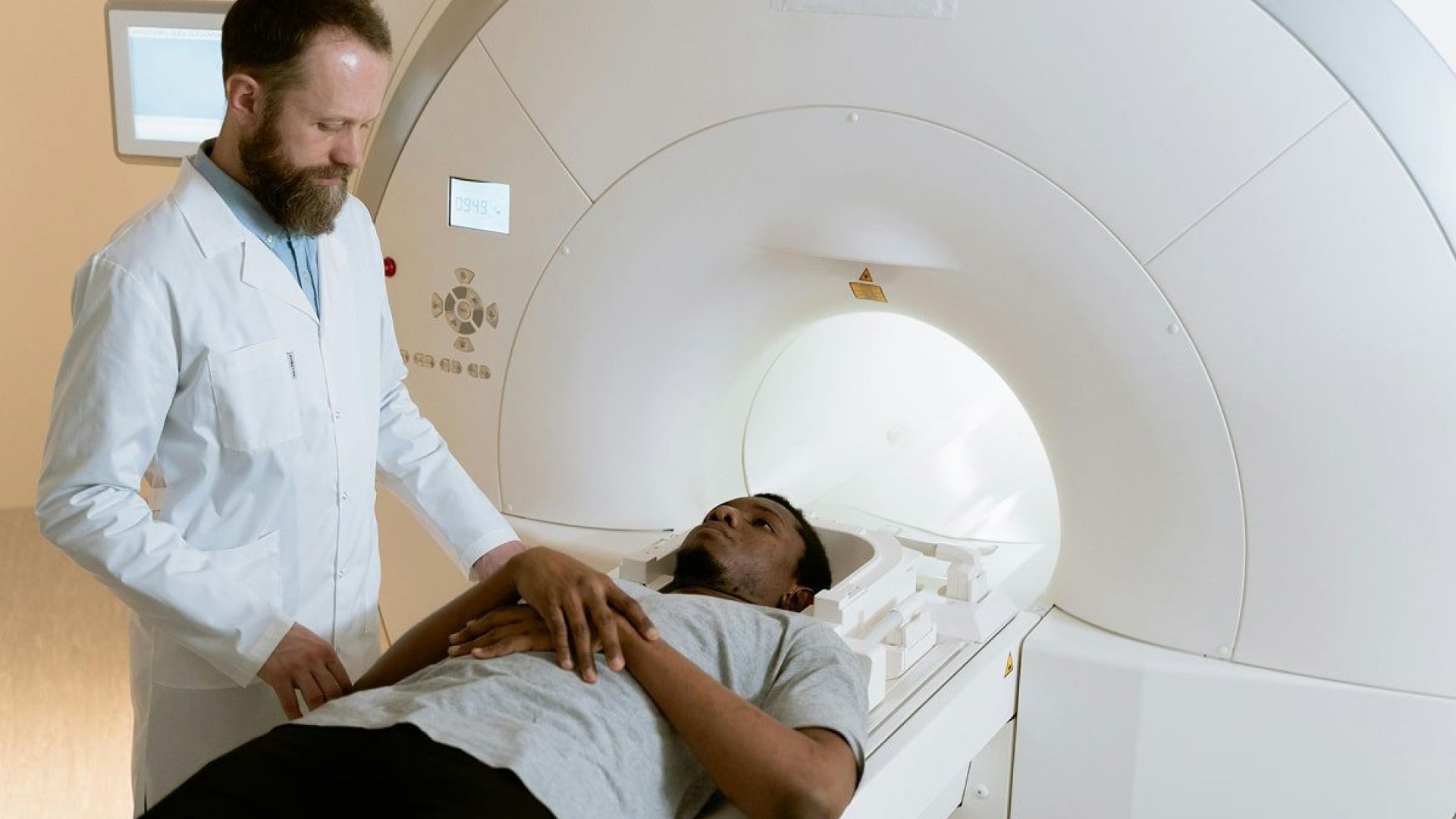The Science of Longevity: Understanding the Biology of Aging [Complete Guide]

Aging is a natural part of life, but understanding the underlying processes can empower us to age gracefully and maintain our health. In this guide, we’ll explore the biological mechanisms that contribute to aging and discuss practical steps to promote longevity.
Genetic Instability: How DNA Damage Speeds Up Aging
Your DNA is like an instruction manual for your body, telling cells how to function, repair, and regenerate. But as we age, this manual gets “worn out” due to daily exposure to toxins, UV rays, pollution, and even the natural processes happening inside our bodies.
Over time, this damage adds up, leading to genetic instability. When your DNA becomes unstable, cells may start malfunctioning, aging faster, or even turning into cancerous cells. This is one of the key reasons why we see an increase in age-related diseases as we get older.
How to Protect Your DNA and Slow Aging
- Eat an antioxidant-rich diet – Berries, dark leafy greens, nuts, and green tea help neutralize free radicals that damage DNA.
- Limit exposure to toxins – Reduce processed foods, alcohol, smoking, and exposure to environmental pollutants.
- Exercise regularly – Physical activity enhances DNA repair mechanisms and reduces oxidative stress.
- Get quality sleep – Deep sleep allows the body to repair damaged cells, including DNA.
By reducing DNA damage, you help your body maintain cellular function and slow down the aging process.
Telomere Shortening: The Aging Clock Inside Your Cells
Imagine the plastic tips at the end of your shoelaces. They prevent the laces from fraying. Your chromosomes have similar protective caps called telomeres that keep them stable and functioning properly.
Each time your cells divide, telomeres get a little shorter. Eventually, they become too short, and the cell can no longer divide, leading to cellular aging or death. This is why telomere length is often seen as a biological clock for aging.
Studies show that shorter telomeres are linked to age-related diseases like heart disease, diabetes, and Alzheimer’s.
How to Maintain Healthy Telomeres
- Stay active – Regular exercise has been shown to preserve telomere length and slow cellular aging.
- Manage stress – Chronic stress accelerates telomere shortening. Meditation, deep breathing, and spending time outdoors can help.
- Eat whole, nutrient-dense foods – Omega-3s (found in fish and flaxseeds) and folate (found in leafy greens) support telomere health.
- Prioritize sleep – Poor sleep is associated with shorter telomeres and faster aging. Aim for 7–9 hours per night.
Taking care of your telomeres means taking care of your future health. By protecting them, you increase your chances of living not just longer, but healthier.
Epigenetic Changes: How Your Lifestyle Influences Aging
Your genes don’t control your destiny—your lifestyle does.
Epigenetics is the science of how your behaviors and environment can turn genes “on” or “off.” While your DNA sequence stays the same, epigenetic changes can influence how your body functions as you age.
For example, poor diet, lack of exercise, chronic stress, and exposure to toxins can trigger negative epigenetic changes that speed up aging and increase disease risk. On the other hand, healthy habits can activate genes that promote longevity and cellular repair.
How to Influence Your Epigenetics for Longevity
- Eat real, whole foods – Nutrients like folate (leafy greens), polyphenols (berries, green tea), and omega-3s (salmon, walnuts) support healthy gene expression.
- Exercise consistently – Physical activity triggers genes that improve metabolism, reduce inflammation, and enhance brain function.
- Avoid environmental toxins – Reduce exposure to processed foods, pesticides, and endocrine disruptors found in plastics and household chemicals.
- Get quality sleep – Sleep is when your body repairs and optimizes gene function. Skimping on rest accelerates aging at the cellular level.
Your daily habits shape how your genes express themselves, meaning you have more control over aging than you think.
Loss of Proteostasis: The Breakdown of Your Body’s Repair System
Proteins are the workhorses of your cells, responsible for everything from repairing tissue to maintaining immune function. But as we age, the body’s ability to regulate and repair proteins—called proteostasis—declines.
This leads to the accumulation of damaged or misfolded proteins, which can interfere with normal cell function and contribute to diseases like Alzheimer’s, Parkinson’s, and heart disease.
Think of it like an office where employees (proteins) stop working properly, leading to chaos and inefficiency. When misfolded proteins pile up, your cells struggle to function optimally.
How to Keep Your Cells Clean and Functioning Well
- Eat protein-rich foods – Quality proteins from fish, eggs, lean meats, and legumes support muscle maintenance and cellular repair.
- Support autophagy with fasting – Occasional fasting (like intermittent fasting) activates autophagy, a process where your body cleans out damaged proteins and recycles them.
- Exercise regularly – Physical activity helps maintain protein balance and reduces the buildup of misfolded proteins.
- Stay hydrated – Water is essential for cellular function and flushing out metabolic waste.
By supporting proteostasis, you help your body repair and regenerate efficiently, keeping your cells youthful and functional.
Mitochondrial Dysfunction: Why Your Energy Levels Drop with Age
Ever wonder why you had boundless energy as a kid but feel more sluggish as you age? A big reason is mitochondrial dysfunction.
Mitochondria are the powerhouses of your cells, responsible for producing energy (ATP) that fuels everything from brain function to muscle movement. But as you get older, mitochondria become less efficient, leading to fatigue, slower metabolism, and increased oxidative stress.
This decline in mitochondrial function is linked to conditions like brain fog, muscle weakness, metabolic disorders, and even neurodegenerative diseases like Alzheimer’s.
How to Keep Your Mitochondria Strong
- Exercise regularly – High-intensity interval training (HIIT) and strength training boost mitochondrial function and energy production.
- Eat healthy fats – Mitochondria thrive on omega-3s (found in fish, chia seeds, and walnuts) and monounsaturated fats (olive oil, avocados).
- Avoid processed foods – Refined sugars and trans fats damage mitochondria and accelerate aging.
- Cold exposure – Brief exposure to cold (like cold showers) stimulates mitochondrial activity and resilience.
The stronger your mitochondria, the more energy you’ll have to stay active, think clearly, and maintain peak health as you age.
Cellular Senescence: The Build-Up of Zombie Cells in Your Body
As we age, some of our cells stop functioning properly but refuse to die—these are called senescent cells, also known as “zombie cells.”
Instead of being cleared away, these cells stick around and release inflammatory chemicals, damaging surrounding tissues. This process is linked to chronic inflammation, weakened immunity, and diseases like arthritis, heart disease, and cancer.
Over time, the accumulation of senescent cells speeds up the aging process and contributes to many age-related conditions.
How to Reduce Zombie Cells and Stay Youthful
- Exercise is key – Studies show that regular physical activity helps remove senescent cells and prevents their accumulation.
- Eat anti-inflammatory foods – Polyphenols found in green tea, dark chocolate, and turmeric help combat senescent cell buildup.
- Consider intermittent fasting – Fasting triggers autophagy, a process where your body eliminates old, dysfunctional cells.
- Get enough sleep – Poor sleep increases inflammation and can accelerate senescent cell accumulation.
By keeping senescent cells in check, you slow down aging, reduce inflammation, and protect your body from age-related diseases.
Stem Cell Exhaustion: Why Your Body Slows Down Repairing Itself
Stem cells are like your body’s repair crew. They help regenerate tissues, heal injuries, and keep your organs functioning properly.
But as you age, your stem cells become less active, meaning your body doesn’t repair itself as efficiently. This is why cuts take longer to heal, joints become stiffer, and muscle recovery slows down.
When stem cells become exhausted, your body struggles to maintain youthful function, leading to weaker immunity, reduced muscle mass, and slower recovery from illnesses or injuries.
How to Keep Your Stem Cells Strong
- Prioritize deep sleep – Your body activates stem cells during deep sleep. Aim for 7–9 hours per night.
- Exercise regularly – Resistance training and moderate endurance exercise stimulate stem cell activity.
- Eat a nutrient-dense diet – Foods rich in polyphenols (berries, green tea), omega-3s (salmon, flaxseeds), and vitamin D (sun exposure, eggs) support stem cell health.
- Try fasting – Intermittent fasting has been shown to rejuvenate stem cells and improve tissue regeneration.
By taking care of your stem cells, you help your body stay strong, heal faster, and maintain vitality as you age.
Altered Intercellular Communication: How Inflammation Speeds Up Aging
Your cells constantly communicate with each other, sending signals that regulate everything from immune responses to tissue repair. But as we age, this communication system starts to break down.
A major factor? Chronic low-grade inflammation, also known as “inflammaging.”
Inflammaging happens when your immune system stays slightly overactive for too long, damaging healthy tissues instead of protecting them. This process is linked to heart disease, diabetes, Alzheimer’s, and even cancer.
How to Reduce Inflammation and Support Cellular Communication
- Eat an anti-inflammatory diet – Load up on leafy greens, berries, fatty fish, turmeric, and olive oil while avoiding processed foods.
- Manage stress – Chronic stress triggers inflammation. Meditation, deep breathing, and social connections help lower stress hormones.
- Move your body daily – Exercise reduces systemic inflammation and keeps cellular communication strong.
- Prioritize gut health – A healthy gut microbiome (supported by probiotics and fiber-rich foods) regulates immune responses and reduces inflammation.
When your cells communicate properly, your body functions optimally, repairs damage efficiently, and slows down the aging process.
Conclusion: How to Slow Aging and Extend Your Healthspan
Aging is inevitable, but how you age is within your control. By understanding and addressing the biological processes that drive aging—like DNA damage, mitochondrial decline, and chronic inflammation—you can slow down aging and stay healthier for longer.
The key to longevity isn’t just about adding years to your life—it’s about adding quality years where you feel strong, energetic, and sharp.
Key Takeaways from This Guide
- Protect your DNA – Eat antioxidant-rich foods, avoid toxins, and get quality sleep.
- Support your telomeres – Reduce stress, exercise regularly, and focus on whole foods.
- Improve mitochondrial health – Stay active, eat healthy fats, and avoid processed foods.
- Clear out “zombie” senescent cells – Try fasting, exercise, and anti-inflammatory foods.
- Keep stem cells working – Sleep well, train consistently, and consume nutrient-dense foods.
- Reduce inflammation – Manage stress, move your body daily, and take care of your gut health.
Aging is complex, but the solutions are simple. Small, consistent changes in your lifestyle can significantly slow the aging process and keep you feeling great for decades to come.
Learn More About Longevity and Personalized Health
At Medicio Health Clinic, we specialize in personalized longevity and preventive healthcare. Our team of experts helps clients implement science-backed strategies to extend their healthspan and optimize their well-being.
Works Cited
Attia, P. (2023). Outlive: The science and art of longevity. Harmony.
Blackburn, E. H., & Epel, E. S. (2017). The telomere effect: A revolutionary approach to living younger, healthier, longer. Grand Central Publishing.
López-Otín, C., Blasco, M. A., Partridge, L., Serrano, M., & Kroemer, G. (2013). The hallmarks of aging. Cell, 153(6), 1194-1217. https://doi.org/10.1016/j.cell.2013.05.039
Mahmoudi, S., & Brunet, A. (2012). Aging and reprogramming: A two-way street. Current Opinion in Cell Biology, 24(6), 744-756. https://doi.org/10.1016/j.ceb.2012.10.004
Mikhed, Y., Gorlach, A., & Knaus, U. G. (2015). Reactive oxygen species in aging and disease. Oxidative Medicine and Cellular Longevity, 2015, 124504. https://doi.org/10.1155/2015/124504
Simons, M. J. P. (2015). Questioning causal involvement of telomeres in aging. Ageing Research Reviews, 24, 191-196. https://doi.org/10.1016/j.arr.2015.08.002
Singh, C. K., Chhabra, G., Ndiaye, M. A., Garcia-Peterson, L. M., Mack, N. J., & Ahmad, N. (2018). The role of sirtuins in antioxidant and redox signaling. Antioxidants & Redox Signaling, 28(8), 643-661. https://doi.org/10.1089/ars.2017.7290
Sullivan, C. S., & Damania, B. (2020). Aging, inflammation, and viral infections. Cellular Immunology, 348, 104041. https://doi.org/10.1016/j.cellimm.2019.104041
Valenzano, D. R., Terzibasi, E., Genade, T., Cattaneo, A., Domenici, L., & Cellerino, A. (2006). Resveratrol prolongs lifespan and retards the onset of age-related markers in a short-lived vertebrate. Current Biology, 16(3), 296-300. https://doi.org/10.1016/j.cub.2005.12.038
Subscribe to Our Newsletter
Spam Free. Unsubscribe anytime.
Complete health and wellness management for your family.
Book a call to learn more and learn how we can partner to enhance your health journey.










Leave a comment